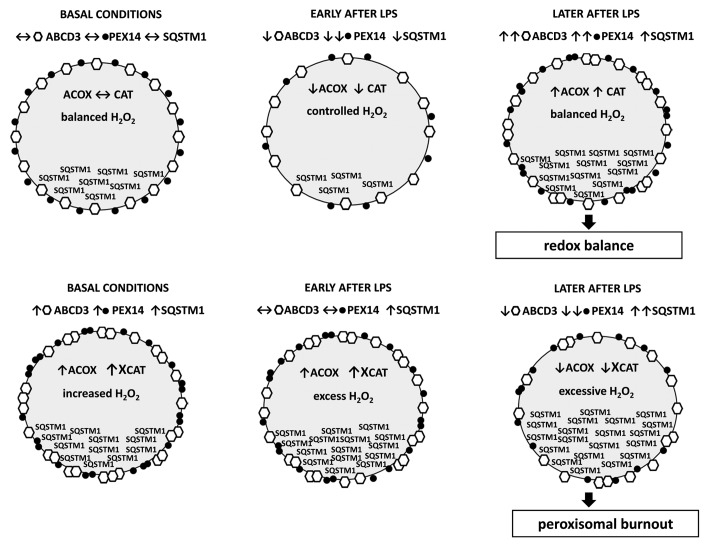Figure 1. (A) Lysosome-competent cells. Under normal conditions, LPS activates pexophagy and induces a biphasic expression response, with an early decrease followed by later upregulation of ABCD3 and PEX14, and increased proliferation of peroxisomes. Both, H2O2-generating ACOX and H2O2-decomposing CAT are decreased, thus preserving peroxisomal H2O2 equilibrium. (B) Lysosome-defective cells. Lysosomal dysfunction inhibits pexophagy, which results in a higher number of peroxisomes under basal conditions. LPS stimulation of lysosome-defective cells does not affect peroxisomal turnover. Cells with accumulated dysfunctional peroxisomes exhibit impaired enzymatic activity of CAT, which together with functioning ACOX creates H2O2 disequilibrium and enhances oxidative stress. Later, this metabolic-oxidative imbalance results in a global deterioration of peroxisomal functions— peroxisomal burnout—and in an aggravated organ injury.

An official website of the United States government
Here's how you know
Official websites use .gov
A
.gov website belongs to an official
government organization in the United States.
Secure .gov websites use HTTPS
A lock (
) or https:// means you've safely
connected to the .gov website. Share sensitive
information only on official, secure websites.
